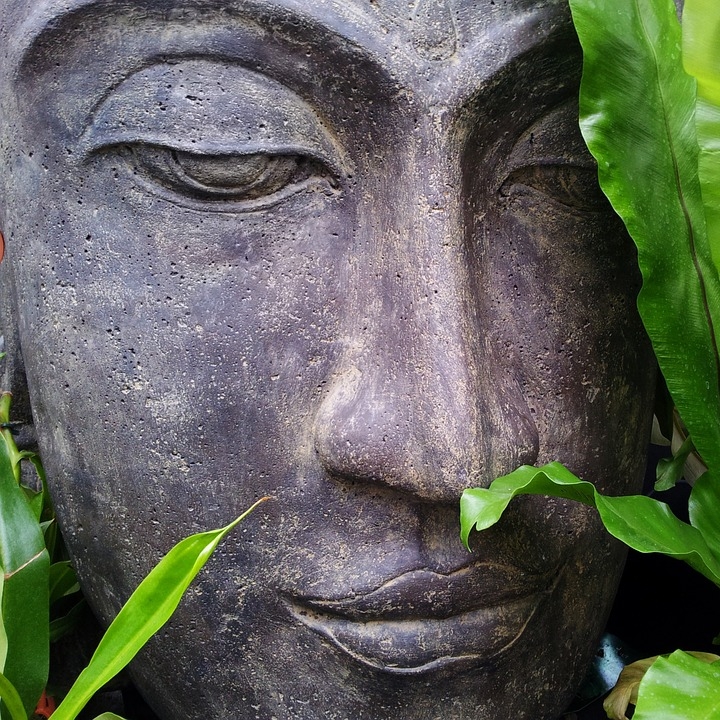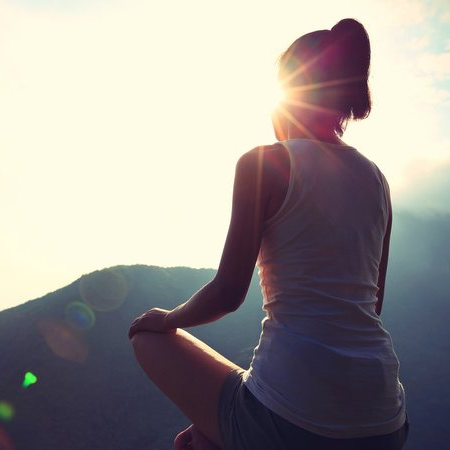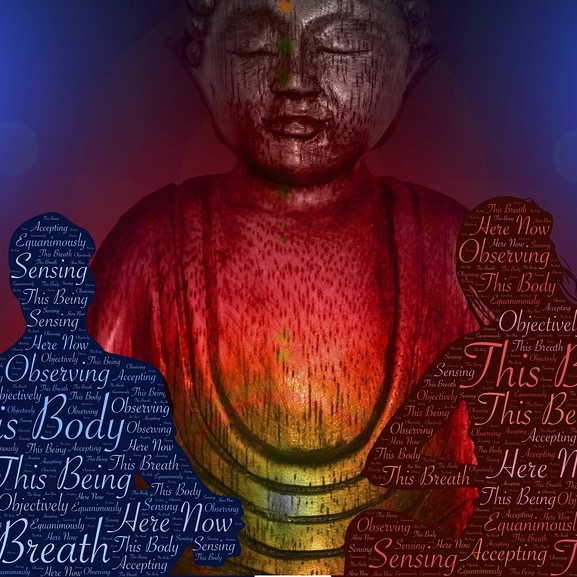July 1, 2018
Last weeks’ article elaborated more about the word meditation: its origin and how it is used today. I also shared my experiences with meditation, the shifts I felt in my life after I started practicing 13 years ago.
But let’s stop talking about me, about my experiences. As I mentioned before, many studies prove what I am sharing with you now. In this second part, I would like to show you why and how meditation is good for you. There are many scientific studies that confirm my own experiences which you can find in the resources section at the end of this article.
To complete this article, I will explain the Four Foundations of Mindfulness, one of the fundamental ways to practice meditation.
THE SCIENCE BEHIND MEDITATION
As the Buddha said, there are three ways to understand something but only one gives wisdom.
The first way is to hear or read what someone has to say, the second is to use your critical thinking and understand the logic of what a person says, the third one is to have the experience yourself and know for yourself.
In this article, I offer you the two first ways to understand meditation, and although my own experiences have definitely convinced me, they can only inspire you.
It is only when you make the effort and experience for yourself, that you will be able to understand the experiences I am talking about. And trust me, you too can have the most incredible experiences that meditation offers.

So let’s discover the logic, the science of meditation, and find what we can learn from it.
Many studies have proven an impact of meditation on mental and physical health, some of these studies are also related to what is called the “vacation effect”. This term is used regarding the multiple benefits of going on vacation, meaning away from a busy and noisy life.
However, these studies show the difference between going on vacation and going on vacation (or retreat) while practicing meditation.
In addition to the amazing results that I will share with you now, the most astonishing fact is that the participants were on retreat/vacation for only six days and the results observed lasted for at least ten months after the experiment.
The most common benefits are [1]:
- Improvement of the immune system
- Better regulation of the stress response
- Increased well-being (in regards to the depressive symptoms and vitality e.g.)
- Benefits to cellular health
Another study was conducted on experienced meditators after participating in a 1-month meditation retreat. The main focus was on non-attachment but many other benefits were observed [2].

Increase in:
- Non-attachment
- Balance-affect
- Cooperation
Decrease in:
- Reward-dependence
- Self-directedness
- Reactivity
- Negative-affect
Studies performed in schools have observed interesting results when children practice meditation:
- 40% decrease in anxiety, stress, and depression
- 64% reduction of violent conflict
One benefit that I always believed, but which was difficult to prove, is that I began to have a deeper sleep and I knew it was related to my meditation practice.
We finally have a study that proves the link! This study shows a reduction in sleep duration for meditators with no side effects, even the opposite, the “psychomotor vigilance task” test shows better results for meditators [3].
The number of studies is so enormous that I will give you a list of some more benefits and continue the article by showing you how meditation is used in many fields of psychology.
Some more proven benefits when practicing meditation are:
- Increase of creativity and empathy
- Clearer decision making
- Capacity to learn faster
- Better attention span
- Decrease in feeling of loneliness
- Improves memory
- Decreases addiction
- Better ability to handle pain
There is a mountain of evidence showing that meditation improves physical and mental well-being. This is probably the reason why even psychology now uses mindulfness based therapies.
For many years, I have studied psychology through the observation of my own mind, working with mentors, learning from books, lectures, and following courses. I discovered priceless tools that can tremendously improve the life of anyone, and after so many years of research and practice, I realized that the most effective therapies are the ones using awareness in one way or another.
Let me give you a few examples and introduce the main concepts of a few therapies in the hope that you will dig deeper into these subjects, for your own benefit.

Fritz Perls, the founder of the Gestalt therapy, believes that the most important element that will help the patient, is bringing awareness on what is perceived and felt. This method is famous and recognized for its efficiency on very difficult psychological cases. By increasing our awareness we can see clearly what we do, how we do it and therefore how we can change while accepting ourself.
Fritz Perls, as well as Milton Erickson and Virginia Satir, have been the main key players in the creation of an important technique called NLP (Neuro-linguistic Programming).
NLP has been created by Richard Bandler and John Grinder in the 70’s. They observed and studied the best therapists of their time and have created this new method. Interestingly enough, NLP is also using awareness as an important tool, when the patients come for a session, it is important for them to be aware of their present state, issues, and feelings. The therapist helps the patients to be aware of what strategies they are using “to be in a certain state” and therefore what strategies they could use to change this state if it’s a negative one, or increase it when positive.
Carl Rogers is also a well-respected therapist who developed a method based on empathy. Several studies have shown that efficient therapists are the ones with the most empathy, empathy being a way to show attention and care for the patient. Rogers developed a method in which he needs to be in a complete state of calmness and awareness to enter the world of the patient to deeply understand what they are experiencing. Doing so allows the therapist to become a clear mirror of the patient’s internal state and functioning, being, therefore, a perfect reflection of the patient’s internal dialogue. The therapist is playing the role of the awareness in this case.
Jon Kabat Zinn also used the Buddhist mindfulness to create his own technique called MBSR, Mindfulness-Based Stress Reduction. MBSR is directly related to the practice of meditation. Because this method is supported by the many studies done on meditation, it was very successful and has been implemented in hundreds of hospitals and clinics.

THE FOUR FOUNDATIONS OF MINDFULNESS
I could go on and on giving examples of more of these numerous therapies based on awareness, mindfulness or meditation, they all use the same principles although each of these words has a subtle more specific meaning. All those terms refer to seeing the reality the way it is, and the only moment in which we can do this is in the present. What can you observe in the present moment? What can you observe right now?
The notion of awareness used in these therapies is the essence of the Buddhist teachings, which explains in detail how to put everything into practice.
One of the fundamental ways to practice meditation is called the 4 foundations of mindfulness.
I will give you a quick explanation of this concept and this will allow you to already understand the roots of meditation and how to apply it in your life. This is the summary of many of the basics of the previous therapies, it is the essence of the Buddhist teachings on mindfulness, it is what you need to know to practice meditation in your daily life and walk the path of the Buddha, the path leading to happiness and full liberation from suffering.
The 4 Foundations of mindfulness:
- Mindfulness of the Body
- Mindfulness of Feelings
- Mindfulness of the Mind
- Mindfulness of Mental objects
Let me give you a few examples of what this means. (I will use the letter “M.” for Mindfulness.)
The M. of the Body includes M. of Breathing, M. of the postures of the body, M. of the elements (fire, air, water, earth). How do we apply this in our daily lives?
Well, when I am breathing in, I am aware that I am breathing in, when I am breathing out, I am aware that I am breathing out. When I am walking, I am aware that I am walking, when I am sitting, I am aware that I am sitting, etc.
One very useful tip that is used in some Buddhist traditions is using a specific word to help you focus. For example: when I breath in, I can (mentally) say “in”, when I am sitting, I can (mentally) say “sitting”, when I am walking, I can (mentally) say “right” when the right foot touches the floor, or simply say “walking” with each step. The same applies for when I eat, drink, lie down, stand, see, hear, smell, taste, etc.

Let’s talk about the M. of Feelings, which is a bit easier to grasp. For instance, if I feel a pleasant feeling, I am aware of the pleasant feeling and I could say “pleasant”, if it is unpleasant, I am aware that there is an unpleasant feeling and I could say “unpleasant”, the same goes for when the feeling is neutral.
For the M. of the mind (also called M. of the consciousness), we will find different types of elements we can be aware of, like anger, greed, delusion, jealousy, conceit, etc. So, when we are aware of anger in the mind, we say “anger” or “without anger”, or if greed is developing, we say “greed”, etc.
The last type of Mindfulness (M. of mental objects) is deeply related to some Buddhist concepts. Here we refer to mental objects that are: The 4 Noble Truths (this is one of the most precious teachings of the Buddha, so if you are interested in this subject, please, look further into it or contact me for more details. I offer Skype sessions for those in search of a more fulfilling and harmonious life, Mind/Body/Spirit)
In this category, you will also find what is called the 5 hindrances (sensual desires, ill will, restlessness, sloth and torpor, doubt) and the 5 aggregates.
I don’t want to go too far into these subjects as they are more advanced practices. But if you are already mindful of your body and feelings, you will make huge progress on the path and feel more serene than ever before.
The last point that I want to make is that if you are interested in meditation, you will often hear that there are 2 main kinds of meditation. The first one leads to calmness and serenity, called Samatha. The other one leads to insights, called Vipassana. Both of them together form one complete form of meditation. They need each other like the two wings of a bird are necessary for the bird to fly, likewise, calmness and insights are necessary for the mind to be liberated. When a mind is calm and concentrated, it sees the reality the way it is, therefore it gets insights and wisdom about what is happening right now. When one gets insights about the nature of reality, the mind gets calm and is concentrated while seeing clearly.
We live in a very interesting period, information is available like never before. Having access today to a three-thousand-year-old teaching is a miracle. I heard a monk once said that the probability for a human being to be a human being that can have access and practice the Dharma is the equivalent to one star in the whole universe.
Now that you know this, it is up to you to use this tool or not, to free yourself from suffering or not, to find bliss and happiness or not.
May you be free and happy,
With loving-kindness and compassion.
Frederic
If you enjoyed this blog, sign-up for our newsletter to receive future updates.
RESOURCES
1. Meditation and vacation effects have an impact on disease-associated molecular phenotypes; Epel ES. Et al; Translational Psychiatry, 2016 Aug 30, 6(8)
2. Psychological Effects of a 1-Month Meditation Retreat on Experienced Meditators: The Role of Non-attachment; Montero-Marin J. Et al; Frontiers in Psychology 2016, Dec 12 (7)
3. Meditation acutely improves psychomotor vigilance, and may decrease sleep need; Kaul P. Et al; Behavioral and Brain Functions, 2010 Jul, 6(47)

Frederic Deltour was born March 30, 1982, in France. He grew up in the suburbs of Paris and spent his childhood on the judo mat. He won many competitions in his youth before becoming a model, actor, and stuntman.
He created and managed 3 companies specializing in natural products and renewable energies, and also worked as a life coach.
Frederic followed a spiritual path for many years, after which he taught Yoga and Tai-Chi.
He has traveled in over 40 countries, climbed several mountains in the Himalayas and the Andes, studied for months with a shaman in Peru, practiced with a yogi in the mountains of India, and lived in a Buddhist monastery for several months.
After traveling for over five years, Frederic is now sharing his experiences in his books and lectures, all while he continues to explore the world.

Comments